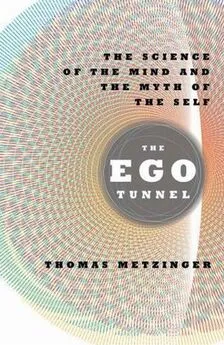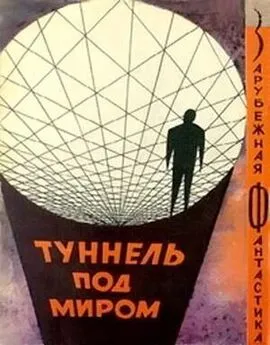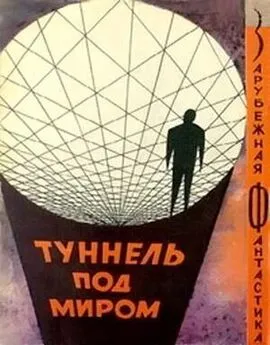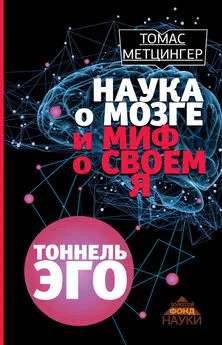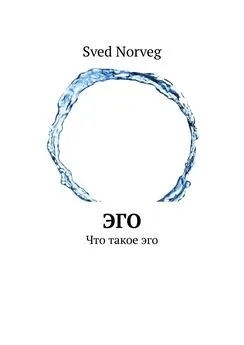Томас Метцингер - Туннель Эго
- Название:Туннель Эго
- Автор:
- Жанр:
- Издательство:неизвестно
- Год:неизвестен
- ISBN:нет данных
- Рейтинг:
- Избранное:Добавить в избранное
-
Отзывы:
-
Ваша оценка:
Томас Метцингер - Туннель Эго краткое содержание
Томас Метцингер — Туннель Эго
Thomas Metzinger — The Ego Tunnel. The Science Of The Mind and The Myth Of The Self
Перевод с английского: Вячеслав Михайлов v.v.mykhailov@gmail.com
http://www.nwethik.com
Туннель Эго - читать онлайн бесплатно полную версию (весь текст целиком)
Интервал:
Закладка:
CHAPTER 5
1. The second question, of course, is the one Descartes asked in the first Meditation, when he realized that everything he had ever believed to be certain-including his impression of sitting by the fire in his winter coat and closely inspecting the piece of paper in his hands-could equally well have occurred in a dream. What makes the problem of dream skepticism so intractable is that even in a «best-case scenario» of sensory perception, there is apparently no reliable, fool-proof method of distinguishing wakefulness and dreaming. According to dream skepticism, literally all of our experiences of waking life could be nothing more than a dream, and we are unable, even in principle, ever to decide this question with certainty. For a detailed discussion of the problem of dream skepticism, see, for instance, Barry Stroud, The Significance of Philosophical Scepticism (New York: Oxford University Press, 1984). For the status of the phenomenal and the epistemic subject in the dream state, see J. Windt & T. Metzinger, «The Philosophy of Dreaming and Self-Consciousness: What Happens to the Experiential Subject During the Dream State?» in Patrick McNamara & Deirdre Barrett, eds., The New Science of Dreaming (Westport, CT: Praeger, 2007). See http://eprints.assc.caltech.edu/200/01/Dreams.pdf.
2. See J. A. Hobson et al., «Dreaming and the Brain: Toward a Cognitive Neuroscience of Conscious States,» Behavioral and Brain Sci. 23:793–842 (2000); and Antti Revonsuo, Inner Presence: Consciousness as a Biological Phenomenon (Cambridge, MA: MIT Press, 2006).
3. Helen Keller, The World I Live In (New York: New York Review Books, 2003).
4. H. Bertolo et al., «Visual Dream Content, Graphical Representation and EEG Alpha Activity in Congenitally Blind Subjects,» Cog. Brain Res. 15:277 284 (2003).
5. See C. H. Schenck, «Violent Moving Nightmares,» www.parasomniasrbd.com/; E. J. Olson et al., «Rapid Eye Movement Sleep Behaviour Disorder: Demographic, Clinical, and Laboratory Findings in 93 Cases,» Brain 123:331339 (2000); and C. H. Adler & M. J. Thorpy, «Sleep Issues in Parkinson's Disease,» Neurology 64 (suppl. 3):12–20 (2005).
6. See Hobson et al., «Dreaming and the Brain» (2000) for details.
7. F. van Eeden, «A Study of Dreams,» Proc. Soc. Psychical Res. 26:431–461 (1913).
8. Oliver Fox, Astral Projection (New Hyde Park, NY: University Books, 1962). Also quoted in S. LaBerge & J. Gackenbach, «Lucid Dreaming,» in Etzel Cardena et al., eds., Varieties of Anomalous Experience: Examining the Scientific Evidence (Washington, DC: American Psychological Association, 2000).
9. See Paul Tholey, Schopferisch traumen (Niedernhausen, Ger.: Falken Verlag, 1987).
10. See Stephen LaBerge & Howard Rheingold, Exploring the World of Lucid Dreaming (New York: Ballantine, 1990).
11. S. LaBerge et al., «Lucid Dreaming Verified by Volitional Communication During REM Sleep,» Perceptual and Motor Skills 52:727–732 (1981); and S. LaBerge et al., «Psychophysiological Correlates of the Initiation of Lucid Dreaming,» Sleep Res. 10:149 (1981).
12. For details, see P. Garfield, «Psychological Concomitants of the Lucid Dream State,» Sleep Res. 4:183 (1975); S. LaBerge, «Induction of Lucid Dreams,» Sleep Res. 9:138 (1980); S. LaBerge, «Lucid Dreaming as a Learnable Skill: A Case Study,» Perceptual and Motor Skills 51:1039-41 (1980); LaBerge & Rheingold, Exploring the World of Lucid Dreaming (1990); and G. S. Sparrow, «Effects of Meditation on Dreams,» Sundance Comm. Dream Jour. 1:48–49 (1976).
13. Hobson et al., «Dreaming and the Brain» (2000), 837. For details on the relation between the DLPFC and reflective thought, see A. Muzur et al., «The Prefrontal Cortex in Sleep,» Trends Cog. Sci. 6:475–481 (2002).
14. Tholey, Schopferisch traumen (1987), 97. English translation by T. Metzinger.
15. «Spandrels» refers to Stephen Jay Gould and Richard C. Lewontin's 1979 essay «The Spandrels of San Marco and the Panglossian Paradigm,» in which, using the architectural analogy, the authors argue that some biological features are exaptations: that is, currently used for something other than what they were «developed for» during natural selection. Proc. Royal Soc. London, Ser. B, Biol. Sci. (1934–1990) 205(1161):581–598 (September 21, 1979).
CHAPTER 6
1. For details, see G. Rizzolatti et al., «From Mirror Neurons to Imitation: Facts and Speculations,» in Andrew N. Meltzoff & Wolfgang Prinz, eds., The Imitative Mind: Development, Evolution, and Brain Bases (Cambridge: Cambridge University Press, 2002); and G. Rizzolatti & M. Gentilucci, «Motor and Visual-Motor Functions of the Premotor Cortex,» in Pasko Rakic & Wolf Singer, eds., Neurobiology of Neocortex (New York: John Wiley & Sons, 1988). An excellent recent overview is Giacomo Rizzolatti & Corrado Sinigaglia, Mirrors in the Brain: How Our Minds Share Actions and Emotions (Oxford: Oxford University Press, 2008).
2. The mirror-neuron system may occasionally go awry. Patients suffering from a rare but well-known neurological syndrome called echopraxia are inevitably forced to act out any behavior they observe in other human beings. What likely happens in these patients is that the mirror-neuron system is inadvertently coupled to the motor system because of lack of prefrontal inhibition. Your mirror neurons come online and lose their ordinary status as purely offline simulators. Therefore, you are literally driven by the actions you see other people performing.
3. See V. Gallese & A. Goldman, «Mirror Neurons and the Simulation Theory of Mind-Reading,» Trends Cog. Sci. 2:493–501 (1998); M. Iacoboni et al., «Cortical Mechanisms of Imitation,» Science 268:2526-8 (1999); and V. Gallese, «The 'Shared Manifold' Hypothesis: From Mirror Neurons to Empathy,» Jour. Consciousness Studies 8:33–50 (2001).
4. See T. Metzinger & V. Gallese, «The Emergence of a Shared Action Ontology: Building Blocks for a Theory,» in G. Knoblich et al., eds., Self and Action. Special issue of Consciousness & Cognition 12(4):549–571 (2003).
5. V. Gallese, «Intentional Attunement: A Neurophysiological Perspective on Social Cognition and Its Disruption in Autism,» Brain Res. 1079:15–24 (2006); F. de Vignemont & T. Singer, «The Empathic Brain: How, When, and Why?» Trends Cog. Sci. 10:435–441 (2006).
6. L. Carr et al., «Neural Mechanisms of Empathy in Humans: A Relay from Neural Systems for Imitation to Limbic Areas,» Proc. Nat. Acad. Sci. USA 100(9):5497–5502 (2003); see also A. Goldman & C. S. Sripada, «Simulationist Models of Face-Based Emotion Recognition,» Cognition
94:193–213 (2005).
7. A. D. Lawrence et al., «Selective Disruption of the Recognition of Facial Expressions of Anger,» NeuroReport 13(6):881–884 (2002).
8. I. Morrison et al., «Vicarious Responses to Pain in Anterior Cingulate Cortex: Is Empathy a Multisensory Issue?» Cog. Affec. & Behav. Neuroscience 4:270–278 (2004); P. L. Jackson et al., «How Do We Perceive the Pain of Others: A Window into the Neural Processes Involved in Empathy,» NeuroImage 24:771–779 (2005); M. Botvinick et al., «Viewing Facial Expressions of Pain Engages Cortical Areas Involved in the Direct Experience of Pain,» NeuroImage 25:315–319 (2005).
9. This was the step from what I call second-order embodiment to thirdorder embodiment. In order to counteract the semantic inflation of the term «embodiment,» I have introduced the notions of «first-order embodiment» (the bottom-up self-organization of intelligent behavior avoiding explicit computation and relying only on physical properties of the system), «secondorder embodiment» (generating intelligent behavior by using an integrated representation of the body as a whole, by internally representing oneself as embodied), and «third-order embodiment» (the functional elevation of second-order embodiment to the level of global availability, i.e., the conscious experience of embodiment). A short summary can be found in Scholarpedia 2 (10):4174 (2007) at www.scholarpedia.org/article/Self_Models.
10. V. Gallese, «Embodied Simulation: From Neurons to Phenomenal Experience,» Phen. Cog. Sci. 4:23–38 (2005).
11. Gallese calls this specific phenomenal state «intentional attunement» — the peculiar experiential quality of familiarity with other individuals that arises because we implicitly match their intentions with processes that go on in our own brain when we form such intentions.
12. See T. Metzinger, «Self Models,» Scholarpedia 2(10):4174 (2007) at www.scholarpedia.org/article/Self_Models; and Metzinger, «Empirical Perspectives from the Self-Model Theory of Subjectivity,» Progress in Brain Res. 168:215–246 (2008).
13. See W. B. Carpenter, Principles of Mental Physiology (London: Routledge, 1875). For a review, see H. Richter, «Zum Problem der ideomotorischen Phanomene,» Zeit. fur Psychologie 71:161–254 (1957).
14. T. Lipps, «Einfuhlung, innere Nachahmung und Organempfindung,» Arch. der Psychologie 1:185–204 (1903).
15. See G. Rizzolatti & Laila Craighero, «The Mirror-Neuron System,» Ann. Rev. Neurosci. 27:169–192 (2004); the classical paper is Rizzolatti & M. A. Arbib, «Language Within Our Grasp,» Trends Neurosci. 21:188–194 (1998). For a brief first overview, see Rizzolatti & Destro, «Mirror Neurons,» Scholarpedia 3(1):2055 (2008).
16. See Rizzolatti & Destro, «Mirror Neurons»; www.scholarpedia.org/artical/Mirror_neurons.
17. See Gallese, «The 'Shared Manifold' Hypothesis» (2001), for an additional discussion, see pp. 174 of this book.
18. Jerome S. Bruner, Acts of Meaning (Cambridge, MA: Harvard University Press, 1990), 40.
CHAPTER 7
1. http://technology.newscientist.com/article.ns?id=mgfflfflfflfflfflfflfflffl.Hffl&print=true.
2. A. Cleeremans, «Computational Correlates of Consciousness,» Prog. Brain Res. ИШШШ-ИЗ (ИШН). See also his «Consciousness: The Radical Plasticity Thesis,» Prog. Brain Res. ИШЛШ-ИЗ
3. J. Bongard et al., «Resilient Machines Through Continuous SelfModeling,» Science
4. Ibid. In particular, see also free online support material at www.sciencemag.org/cgi/content/full/…(See www.ccslmae.cornell.edu/research/selfmodels/morepictures.htm for additional online material.)
5. See also Thomas Metzinger, «Empirical Perspectives from the SelfModel Theory of Subjectivity: A Brief Summary with Examples,» in Rahul Banerjee & Bikas K. Chakrabarti, eds., Progress in Brain Research (Amsterdam: Elsevier)
6. Karl Popper & J. C. Eccles, The Self and Its Brain: An Argument for Interactionism (New York: Routledge, ШИШИ), Alan M. Turing's paper is in Mind
7. It is interesting to note how perhaps the foremost theoretical «blind spot» of current philosophy of mind is conscious suffering. Thousands of pages have been written about color qualia and zombies, but almost no theoretical work is devoted to ubiquitous phenomenal states such as physical pain, boredom, or the everyday sadness known as subclinical depression. The same is true of panic, despair, shame, the conscious experience of mortality, and the phenomenology of losing one's dignity. Why are these forms of conscious content generally ignored by the best of today's philosophers of mind? Is it simple careerism («Nobody wants to read too much about suffering, no matter how insightful and important the arguments are»), or are there deeper, evolutionary reasons for this cognitive scotoma? When one examines the ongoing phenomenology of biological systems on our planet, the varieties of conscious suffering are at least as dominant as, say, the phenomenology of color vision or the capacity for conscious thought. The ability to consciously see color appeared only very recently, and the ability to consciously think abstract thoughts of a complex and ordered form arose only with the advent of human beings. Pain, panic, jealousy, despair, and the fear of dying, however, appeared millions of years earlier and in a much greater number of species.
Читать дальшеИнтервал:
Закладка:
